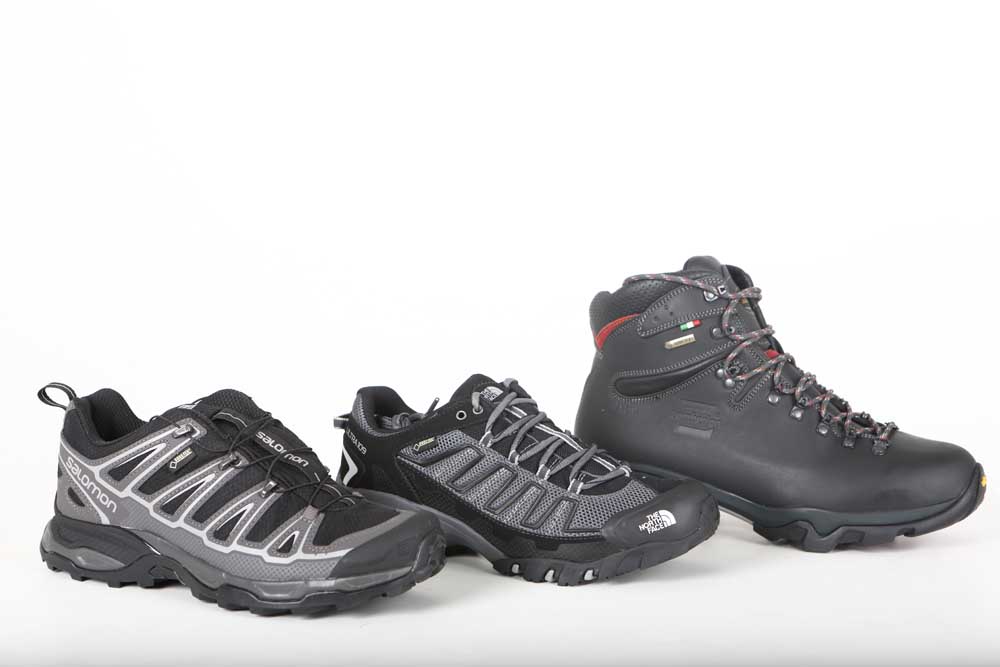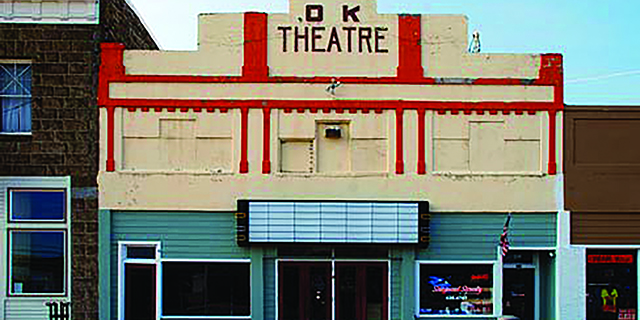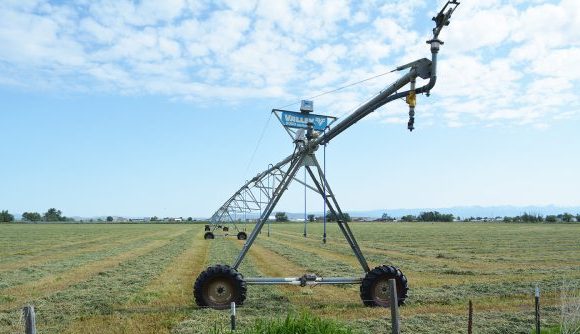A shoe for every hiker
Published 12:00 am Monday, February 15, 2016

- ORIG / 01-03-2016 / Jarod Opperman / The BulletinMen's hiking footwear, from left: Salomon X Ultra Low, North Face Ultra 109, and Zamberlan Vioz.
The footwear preferences of hikers have evolved dramatically over the past 20 or so years.
So much so, in fact, that many of the world’s most hard-core long-distance hikers don’t even wear hiking boots — they wear trail-running shoes.
“Folks who are hiking the Pacific Crest Trail or the Appalachian Trail, they’re not looking for a (heavy-duty boot),” said Asa Fields, a footwear specialist at REI in Bend. “They’re going thousands of miles, but they want something that is really lightweight.”
According to Fields, shoes such as the Brooks Cascadia or the North Face Ultra 109 ($120 retail) have become the footwear of choice for those who log hundreds to thousands of miles on maintained trails.
Terrain, not necessarily mileage, is the decisive factor for those who might seek a more heavy-duty, traditional hiking boot. Hikers who venture off trail into lava rock or scree or those who hike year-round could very well require such a boot that is waterproof, with ankle support and made with fabric that will stand up to the most unforgiving terrain.
Dave Hufford, another footwear specialist at REI in Bend, says he likes to set his compass for a lake and hike through rocks and brush. For such off-trail trekking, he prefers a more heavy-duty boot with a reinforced toe, such as the Vasque St. Elias ($199).
“I’ve climbed South Sister every year, and I’ve done it in lower-cut shoes, but I’ve gone back to heavier-duty hiking boots,” Hufford says.
While trail-running shoes are on the lighter, less supportive end of the spectrum for hiking footwear, on the other end are boots such as the Zamberlan Vioz ($295), premium leather, stiff, stable hiking boots handmade in Italy.
In between trail-running shoes and heavy-duty high-top boots are low-cut hiking boots. If the amount of the product is any indication of trends, the shoe wall at REI features vastly more trail-running shoes and low-cut hiking boots than the higher, more expensive boots.
Obviously, personal preference trumps in the decision-making process, but Hufford will ask customers seeking hiking boots a series of questions to help narrow their selection.
“Will it be trail hiking? Off trail? Do you want it to be waterproof? Do you want to be able to use it all four seasons, or are you just a summer hiker? Things like that,” Hufford says. “Also, I’ll look at their feet and see if they have wide feet, then we’ll aim them toward some wider-type shoes.”
Keens are extremely popular among hikers with wide feet. For women, the Keen Targhee ($135) is a popular high-top hiking boot, as well as the Ahnu Montara ($165). And Salomon XR Mission ($110) is a big-selling women’s trail-running shoe.
Hufford says that over the past decade or more even the most rugged of hiking boots have become lighter and trimmer with advancing technology. Most hiking boots now no longer require a “break-in” period, though Hufford still advises hikers to wear their new boots around a bit before a long, demanding hike, such as climbing South Sister.
“Twenty years ago you had big, heavy boots with stitch-down soles, and they were more like a mountaineering boot, and that’s what people hiked in,” Hufford explains. “They were stiff and you had to break those in. And you don’t see that much anymore. Now they’re trimmer, and lighter weight, but still with really great support.”
Fields calls the North Face Ultra 109 his “go-to shoe.” He wears them to work, but he also wears them on multiday backpacking trips. It is a trail-running shoe, but with the firmness of a hiking boot.
“It’s an amazingly comfortable shoe,” Fields says.
The Salomon X Ultra Low ($140) is similar to the North Face Ultra 109 but a bit stiffer for traditional hiking.
The main difference between a trail-running shoe and a low-top hiking shoe is the mid sole, according to Fields.
“The trail-running shoe is often springier and more responsive,” Fields explains. “You can still definitely use those for hiking, but in the low-top hikers, they use a lot more foam of different varieties, which will be squishier and more comfortable, but not as springy. But some of the trail-running shoes are stiffer, with the stability and comfort to use them for longer-distance backpacking.”
Fields adds that the North Face Ultra 109 has a mix of the more responsive trail-running shoe and the squishy foam of a low-top hiking shoe.
According to Fields, the advancement of midsole materials, primarily, is what has allowed hiking shoes to become more lightweight and more comfortable.
But they are certainly not cheap. An entry-level shoe/boot is typically $100 to $150 retail. Shoes or boots in the $150 to $200 range will include more features, such as full-grain leather and Gore-Tex.
But trail-running shoes, more and more, seem to be the prime footwear for hikers who stay on the well-maintained singletrack of the Central Oregon Cascades in the summer and fall.
“If somebody comes in and wants something for the Deschutes River Trail,” Fields says, “we’ll point them toward trail-running shoes.” •









